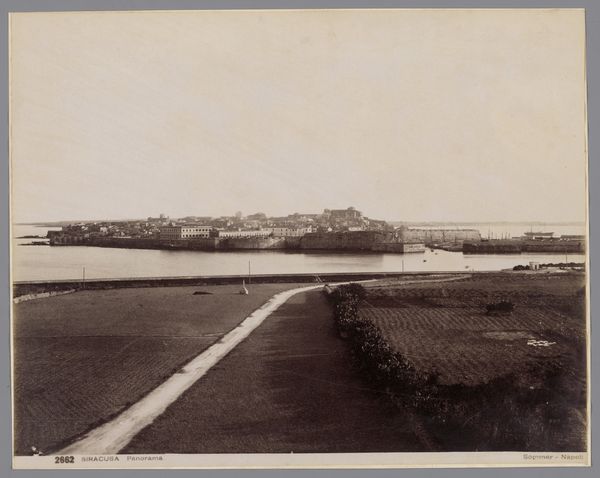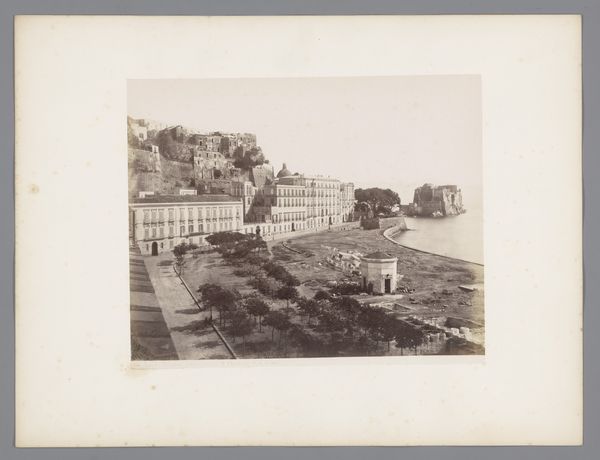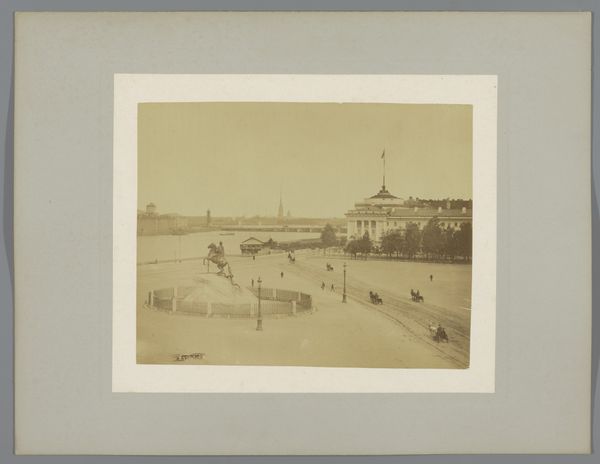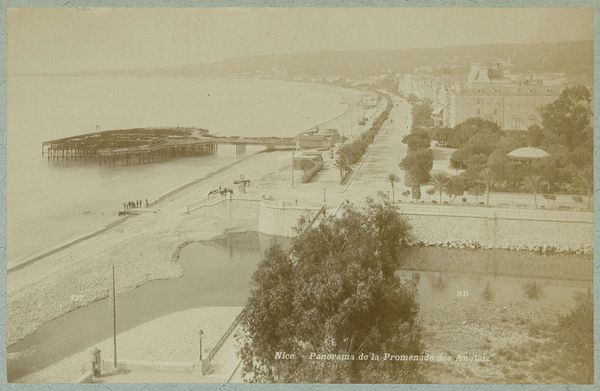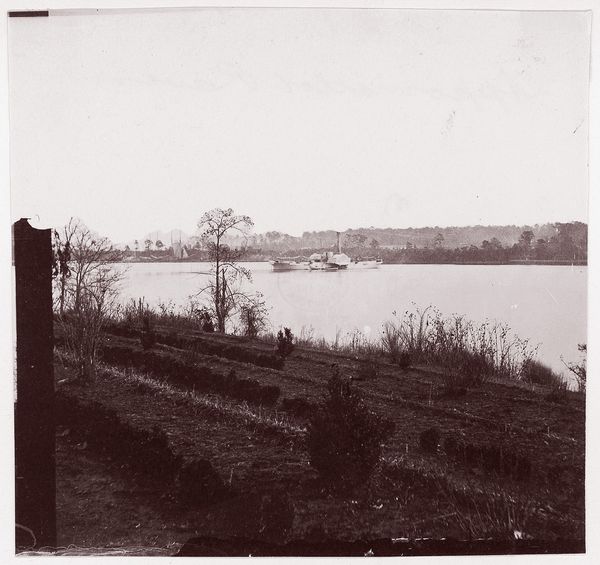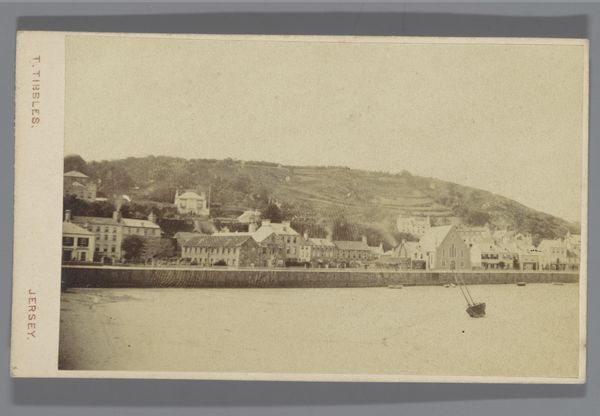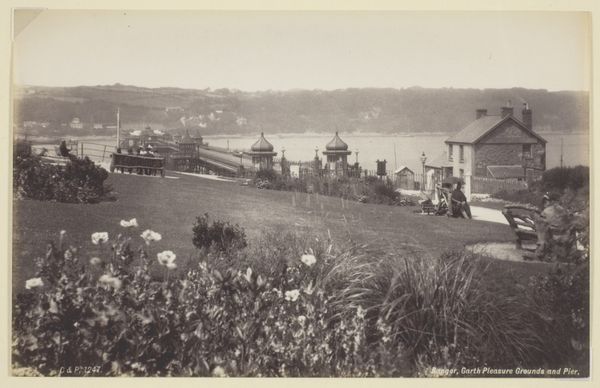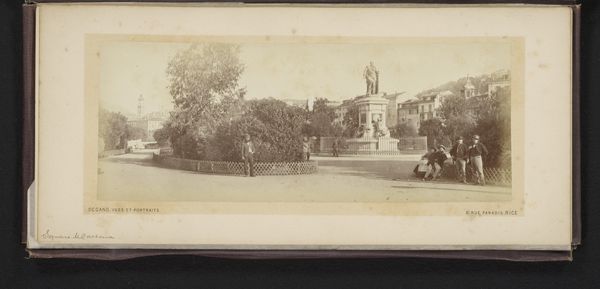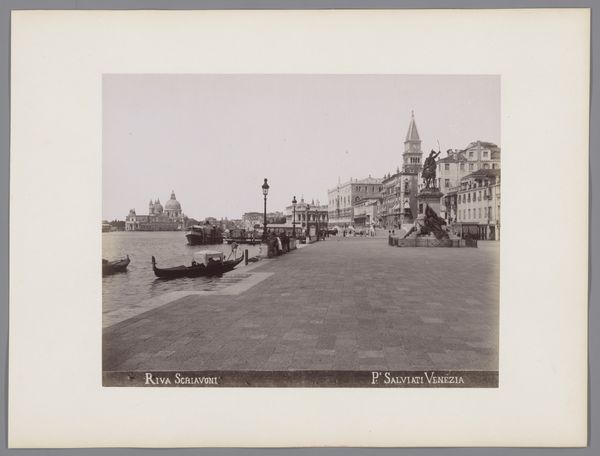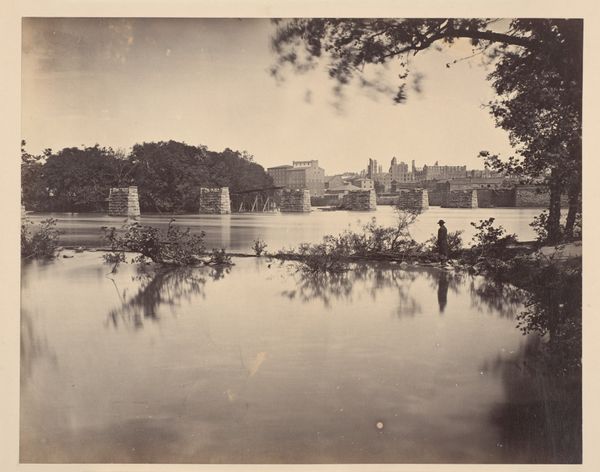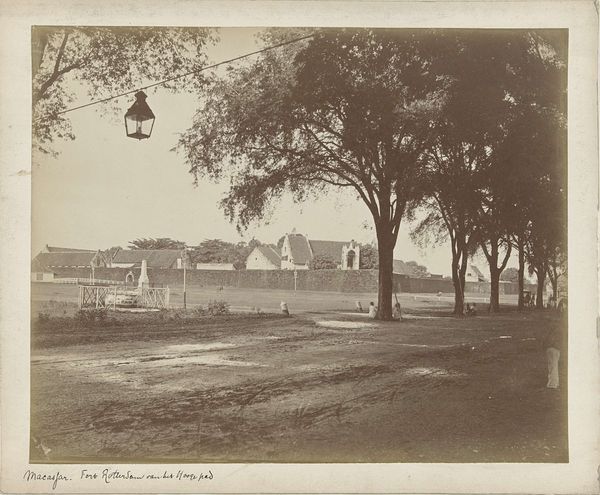
daguerreotype, photography
#
16_19th-century
#
landscape
#
daguerreotype
#
photography
#
building
Dimensions: Image: 16.5 x 20.3 cm (6 1/2 x 8 in.)
Copyright: Public Domain
William Henry Fox Talbot created this photograph, *Plymouth from Mt. Edgcumbe*, using his innovative calotype process. This early photographic technique, involving paper negatives and silver iodide, gave his prints a distinctive, slightly soft focus, quite different from the sharper daguerreotypes. Notice the sepia tones, a direct result of the chemical processes involved. The scene depicts a serene landscape, with figures posed alongside cannons – symbols of military power, yet softened by the presence of leisurely dressed women. Talbot was interested in capturing the texture of the world through this new medium; each print required careful labor, from coating the paper to the final development. Photography in Talbot’s time was not just art; it was also science and a burgeoning industry. The calotype, with its capacity for reproduction, opened up new possibilities for documentation and dissemination of images, influencing both artistic and social realms. Understanding Talbot's process gives us a richer appreciation of the image itself.
Comments
No comments
Be the first to comment and join the conversation on the ultimate creative platform.
